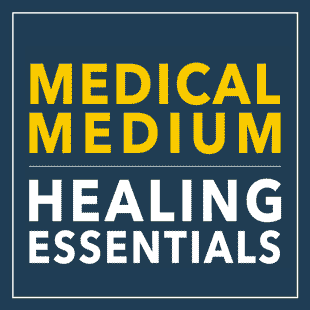Watch: Truth About Your Candida

Truth About Your Candida
Until recently, few people had even heard of Candida. By the late 1990s, however, Candida diagnoses had spread from the alternative to the conventional medical world. In reality, however, few cases of Candida overgrowth are strictly a Candida problem. Candida in and of itself is harmless. In fact, we can’t sustain life without it in our intestinal tract, and it helps protect us by consuming debris from poor quality food and toxins. In the process, this helps reduce the food supply available to truly harmful pathogens that would otherwise feed on this debris.
In other words, Candida cells intentionally consume food waste and poisons to prevent harmful bugs, such as E. coli, C. diff, and Streptococcus, from feasting on these things and building their armies. Candida can also co-occur with conditions such as Lyme disease, shingles, Epstein-Barr virus, herpes, diabetes, and more. Thus, a large build-up of Candida can serve as a warning sign that something else in your body requires attention—but Candida is often the scapegoat. For instance, a vaginal Streptococcus infection could go unnoticed by doctors, while yeast that’s also present is blamed for the patient’s symptoms. Once you put an end to the primary issue, Candida levels will naturally return to normal.
Fat vs. Fruit
If you have been diagnosed with Candida, odds are you have been advised to cut all processed foods from your diet, avoid sugar like the plague (including fruit), and to consume a high-protein, high-fat diet. While it is indeed critical to avoid sugar-laden and processed foods such as doughnuts, cakes, cookies, candy, popcorn, pastries, croissants, scones, and bagels, strictly avoiding fruit is unwarranted. Candida does not feed on sugar unless it is from a grain such as corn or wheat, and it does not feed on natural fruit sugar.
Importantly, the natural fructose in fruit is bonded with beneficial compounds, including antioxidants, minerals, phytochemicals, and even cancer-killing micronutrients that help kill pathogens such as strep, E. coli, C. diff, staph, and viruses that are likely responsible for your increased Candida (again, increased Candida levels are actually a defense mechanism designed to prevent these pathogens from proliferating). Thus, fruit is your anti-Candida secret weapon because it is your “broad-spectrum” anti-pathogen secret weapon!
If you’re still fearful of fruit, bear in mind that the sugars from fruit leave your stomach in about three to six minutes, and the sugar doesn’t reach the intestinal tract. What does reach the intestinal tract is the skin, pulp, and fiber in fruit, which actually helps to clear the intestines of things like SIBO (small intestinal bacterial overgrowth) and other pathogen-related conditions. Apart from fruit, other forms of processed sugar—processed cane sugar, beet sugar, agave nectar, corn syrup, etc.—do feed Candida.
Another misconception about Candida is the notion that a high-protein, high-fat diet starves Candida cells, but in reality, both protein and fat feed Candida! Even if your symptoms initially improve, ultimately this approach can backfire, as excess protein and fat in the gut provides a feeding ground for bacteria, cancer cells, viruses, etc. which can trigger Candida growth as your body attempts to combat these things. Thus, the best approach is to eat a lower-fat diet that includes fruits and their pathogen-killing nutrients. It’s not that healthy fats (such as avocados, nuts, seeds) are bad for us, it’s just that it is best to keep fat intake in check.
This is true regardless of the type of diet you eat. For example, if you eat a vegan diet, reduce the amount of fat you take in from things like nuts, nut butters, seeds, oils, and avocados. If you are ovo-lacto vegetarian, cut back on eggs, dairy, nuts, seeds, oils, avocado, etc. If your diet includes animal products, cut back to one serving of meat per day, as even lean animal protein contains some fat. In addition to reducing fat and including fruit, it is also important to consume ample quantities of leafy green vegetables such as spinach, lettuce, and arugula, and to avoid processed foods and grains.
While these recommendations may contradict everything you’ve heard about Candida, if you are one of many who has endured restrictive diets, denying yourself even a small handful of blueberries—without the reward of symptom relief—it may be time to try something new.
To learn more about Candida, check out Medical Medium: Secrets Behind Chronic and Mystery Illness and How to Finally Heal.
This item posted: 09-Mar-2016
The information provided on this Site is for general informational purposes only, to include blog postings and any linked material. The information is not intended to be a substitute for professional health or medical advice or treatment, nor should it be relied upon for the diagnosis, prevention, or treatment of any health consideration. Consult with a licensed health care practitioner before altering or discontinuing any medications, treatment or care, or starting any diet, exercise or supplementation program. Neither Anthony William nor Anthony William, Inc. (AWI) is a licensed medical doctor or other formally licensed health care practitioner or provider. The content of this blog and any linked material does not necessarily reflect the opinions of Anthony William, AWI or the principal author, and is not guaranteed to be correct, complete, or up to date.
Thanks for printing this post. For more, visit www.medicalmedium.com


